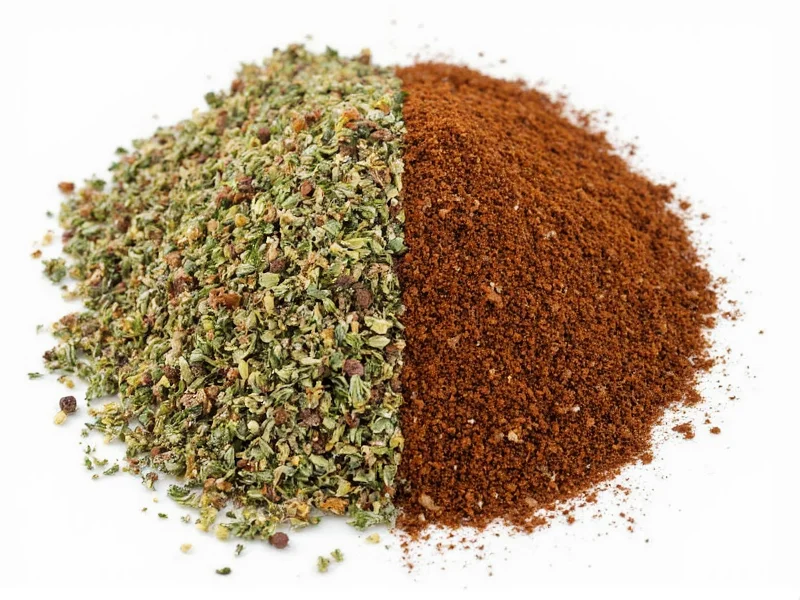When exploring the difference between Mexican oregano and regular oregano, it's crucial to understand these aren't simply regional variations of the same plant. Despite sharing the name "oregano," these herbs come from completely different botanical families and offer unique culinary properties that significantly impact your cooking results.
Botanical Origins and Plant Characteristics
Mexican oregano (Lippia graveolens) belongs to the verbena family (Verbenaceae), making it only distantly related to traditional oregano. Native to Mexico and Central America, this perennial shrub features elongated leaves and small white flowers. The plant thrives in hot, arid climates and develops its characteristic robust flavor profile when grown in these conditions.
Regular oregano, also called Mediterranean or Greek oregano (Origanum vulgare), is part of the mint family (Lamiaceae). This hardy perennial grows wild throughout the Mediterranean region and features small, oval leaves with a more delicate appearance than its Mexican counterpart. The botanical distinction explains why these herbs shouldn't be treated as direct substitutes in recipes.
Flavor Profile Comparison
The most significant difference between Mexican oregano and regular oregano lies in their flavor chemistry. Mexican oregano delivers a powerful punch with dominant earthy notes, subtle citrus undertones, and a hint of licorice. Its intensity makes it ideal for bold dishes that can stand up to its robust character.
Mediterranean oregano provides a more nuanced experience with herbal, slightly sweet notes and delicate floral hints. This subtlety allows it to complement rather than dominate dishes, making it perfect for lighter preparations where herb flavor should enhance rather than overwhelm.
| Characteristic | Mexican Oregano | Regular Oregano |
|---|---|---|
| Botanical Family | Verbenaceae | Lamiaceae |
| Primary Flavor Notes | Earthy, citrus, licorice | Herbal, sweet, floral |
| Flavor Intensity | Strong, robust | Mild, subtle |
| Best Culinary Applications | Bean dishes, chili, mole | Pizza, tomato sauces, grilled vegetables |
| Substitution Ratio | Use ⅔ amount of regular oregano | Use 1.5x amount of Mexican oregano |
Culinary Applications and Recipe Considerations
Understanding when to use each variety represents the practical application of the Mexican oregano vs Mediterranean oregano differences. Mexican oregano shines in dishes that benefit from its bold character—think black bean soup, chili con carne, and traditional mole sauces. Its resilience during long cooking times makes it ideal for simmered dishes where delicate herbs would lose their character.
Regular oregano performs best in applications where a more delicate herbal note enhances rather than dominates. It's essential in classic pizza sauces, Greek salads, and Italian tomato-based dishes. Many home cooks make the mistake of using these herbs interchangeably without adjusting quantities, resulting in either under-seasoned or overpowering dishes.
Substitution Guidance for Home Cooks
When you find yourself needing to substitute Mexican oregano for regular oregano (or vice versa), proper adjustment is critical. Because Mexican oregano packs approximately 50% more flavor intensity, use only two-thirds the amount called for when substituting regular oregano. Conversely, when replacing regular oregano with Mexican variety, start with half the specified amount and adjust to taste.
For authentic Mexican cuisine, never substitute regular oregano for Mexican without adjustment—your pozole or enchilada sauce will lack the characteristic earthy depth. Similarly, using Mexican oregano in Italian marinara creates an unbalanced, overly aggressive flavor profile that overwhelms other ingredients.
Storage and Shelf Life Considerations
Both dried varieties maintain quality for 6-12 months when stored properly in airtight containers away from light and heat. However, Mexican oregano's higher oil content means it loses potency slightly faster than Mediterranean oregano. Always check dried herbs by rubbing a small amount between your fingers—fresh oregano should release a strong, pleasant aroma. If you detect little scent, it's time to replace your supply.
Identifying Quality Products
When shopping for either variety, look for packaging that specifies the botanical name. Many products labeled simply "oregano" contain Mediterranean variety, even when sold in Latin American markets. For authentic Mexican oregano, check for Lippia graveolens on the label. The leaves should appear whole and vibrant—avoid products with excessive stem fragments or browned leaves, which indicate age and diminished flavor.











 浙公网安备
33010002000092号
浙公网安备
33010002000092号 浙B2-20120091-4
浙B2-20120091-4